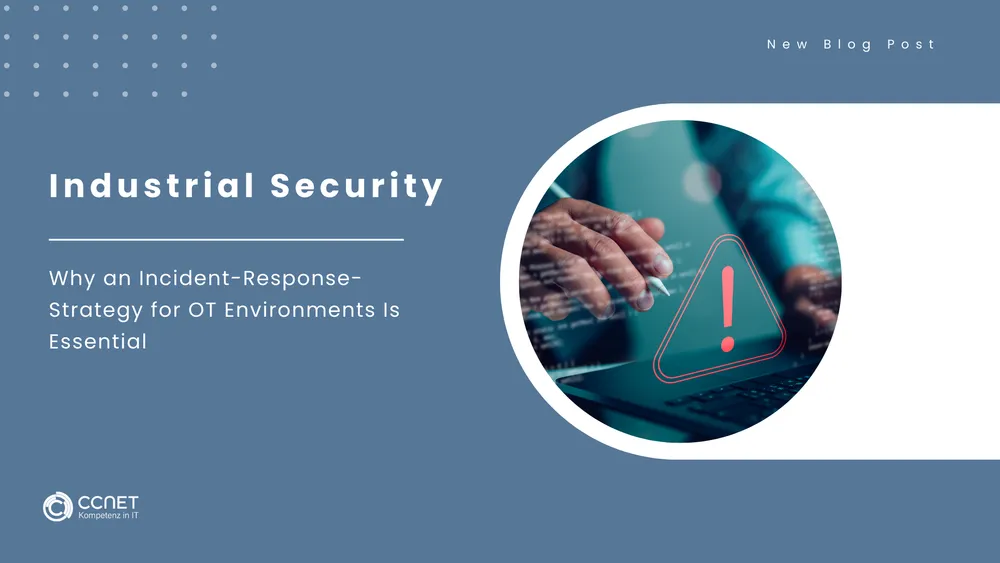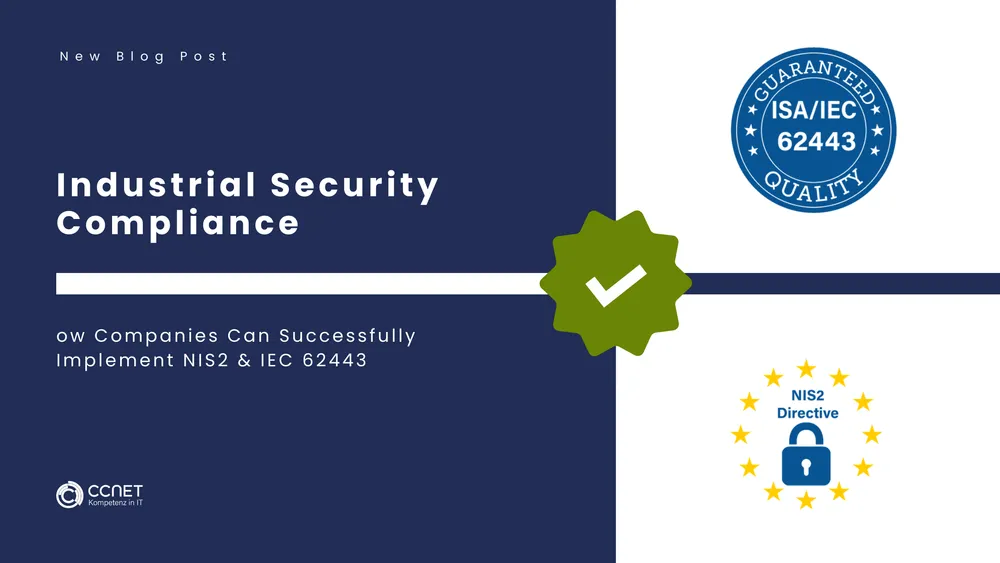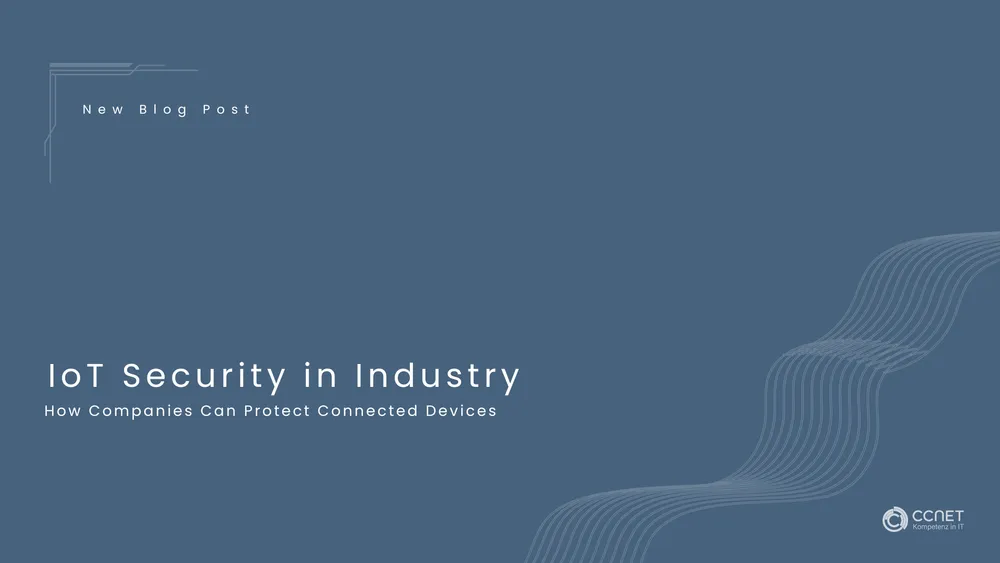
CCNet
Apr 16, 2025 • 2 min read

NIS2 & IEC 62443: The New Cybersecurity Requirements for Industrial Companies
Industrial Companies Facing New Challenges
Industrial companies are facing a new challenge: With the NIS2 Directive and the requirements of the IEC 62443 standard, cybersecurity regulations for production facilities are becoming significantly stricter. Companies operating OT security and IoT systems must now thoroughly address these regulations—otherwise, they risk severe penalties and security threats.
Why is this not just about IT security, but primarily about production? Because industrial plants, machine controls (PLC, SCADA), and connected IoT sensors are increasingly becoming targets for cybercriminals.
Further information can be found here: NIS2
What Is the NIS2 Directive and Why Does It Concern Industrial Companies?
The NIS2 Directive (Network and Information Security Directive 2) is the new European cybersecurity law coming into effect in 2024. It expands the security requirements for companies in critical and important sectors—including manufacturing, food production, chemicals, pharmaceuticals, and mechanical engineering.
Key changes in the NIS2 Directive for industrial companies:
- Expanded cybersecurity obligations for IT & OT environments
- Mandatory reporting of security incidents within 24 hours
- High fines for companies that fail to implement appropriate protective measures
- Management accountability – executives and directors can be held personally liable for non-compliance
What Does This Mean for Companies?
Industrial companies must document security measures, actively monitor threats, and detect cyberattacks at an early stage. OT networks & IoT devices must be fully integrated into security management.
IEC 62443: The Industrial Cybersecurity Standard
While NIS2 sets legal requirements, the IEC 62443 standard provides an international best-practice framework for industrial cybersecurity. It defines security requirements for automation systems, SCADA controls, machine manufacturers, and industrial networks.
Key requirements of IEC 62443:
- Segmentation of OT & IT networks (protection against lateral attacks)
- Strict access controls for machines & control systems
- Real-time monitoring of threats & anomalies
- Patch management & regular security updates for control systems
- Secure design for new industrial facilities (Security by Design)
What Risks Do Companies Face If They Fail to Act?
Without a clear cybersecurity strategy for OT security and IoT systems, companies risk becoming victims of targeted attacks. In recent years, ransomware attacks on industrial companies have doubled.
Possible consequences for affected companies:
- Production downtimes & financial losses due to attacks on control systems
- High fines for NIS2 violations (up to 2% of annual revenue)
- Reputation damage & loss of trust from customers & partners
How Can Industrial Companies Prepare for NIS2 & IEC 62443?
Implement a Security Strategy for IT & OT
Industrial companies must establish an ISMS (Information Security Management System) that considers IT & OT security together.
Network Segmentation with Next-Gen Firewalls
By deploying next-gen firewalls such as Forcepoint or Palo Alto, companies can clearly separate IT & production networks and prevent attacks on sensitive OT systems.
Access Control with IAM (Keycloak)
Access rights for technicians & maintenance teams must be clearly defined. IAM (Identity & Access Management) ensures that only authorized personnel can operate machine controls.
Real-time Security Monitoring with SIEM & IDS
SIEM systems such as Wazuh and Intrusion Detection Systems (IDS) like Snort can detect cyberattacks early and prevent production outages.
Regular Security Audits & Penetration Testing
Companies must continuously test & improve their infrastructure to stay protected against new threats.
Conclusion: NIS2 & IEC 62443 Require Immediate Action
The new cybersecurity regulations are no longer a future issue—they must be implemented by 2024. Companies that fail to act now risk production downtimes, heavy fines, and loss of sensitive data.
📢 How Well Is Your Company Prepared for NIS2?
Join us at the SPS Parma Live Demo to learn how the CCNet Industrial Security Dashboard helps you meet all requirements and secure your production environment.


